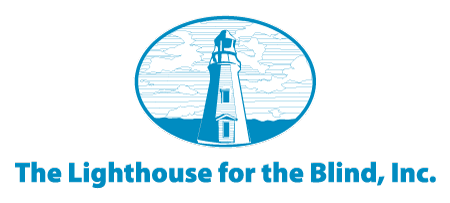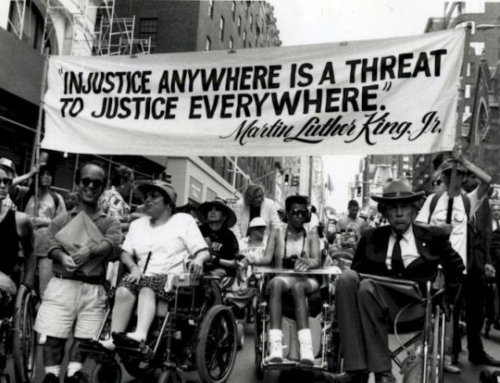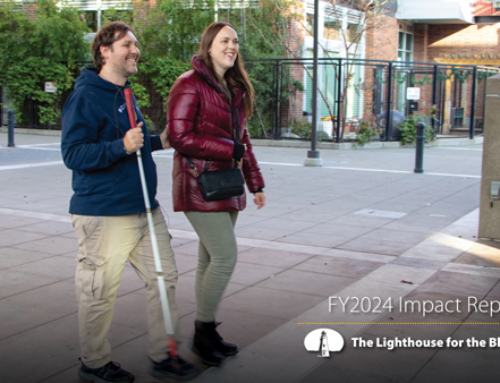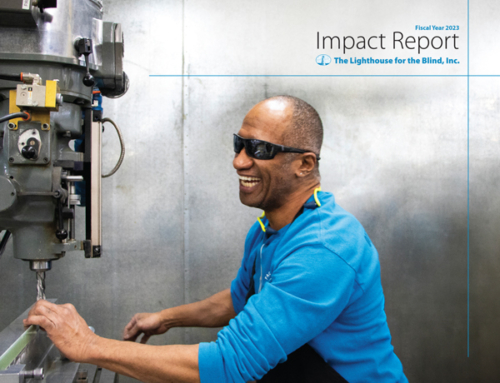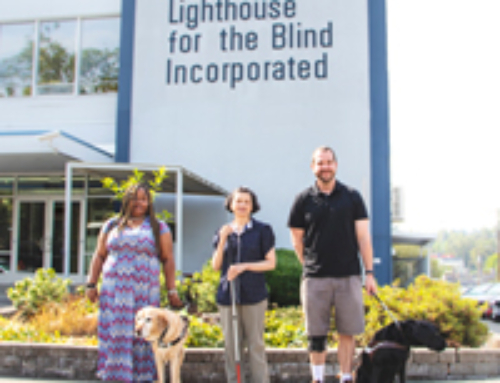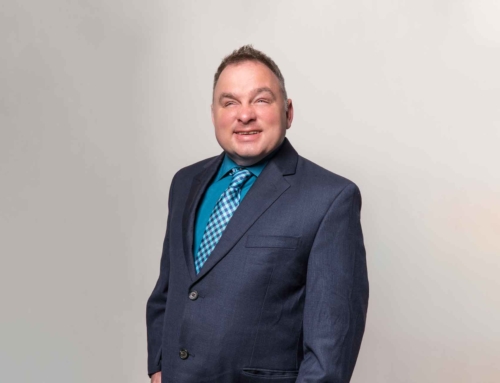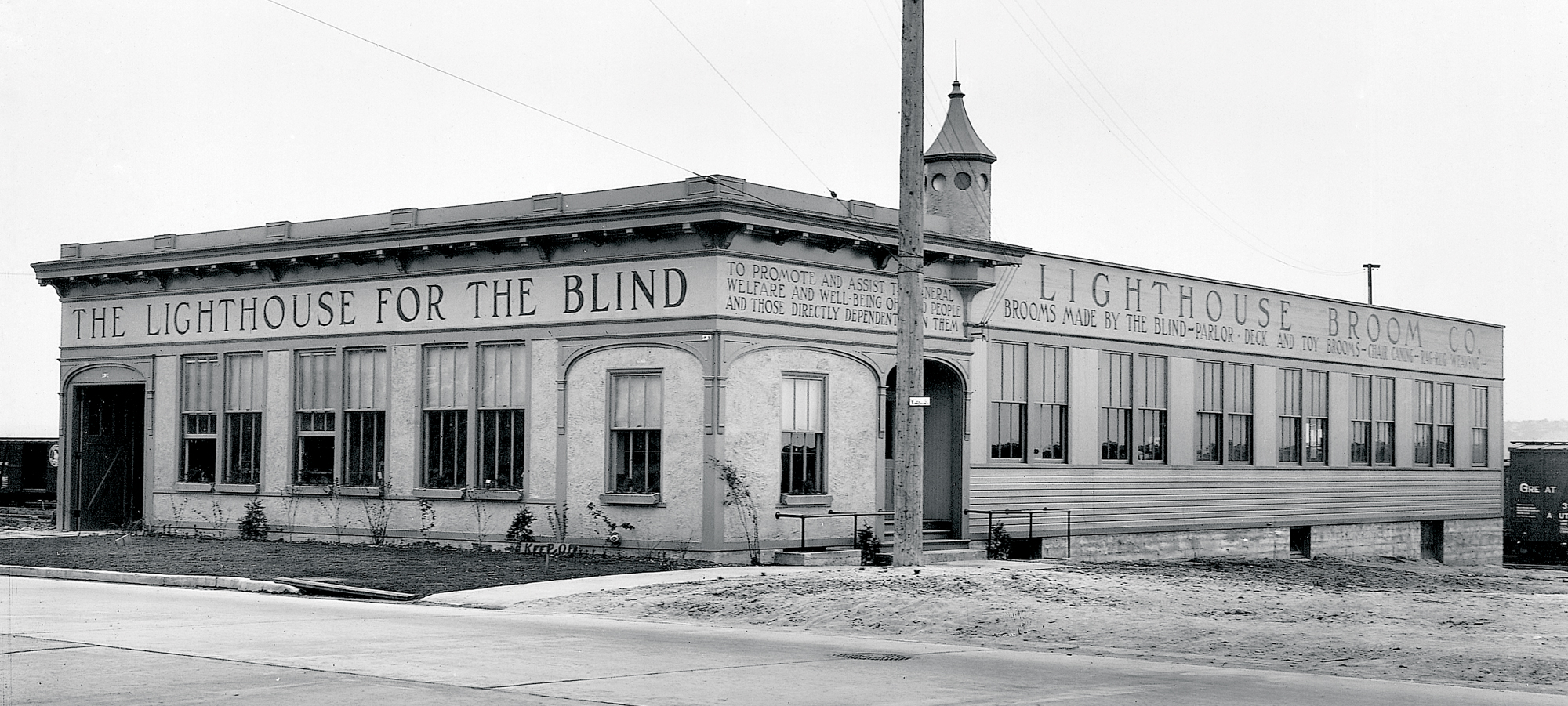
Lighthouse facility on the Seattle waterfront in 1925.
For most of us, the words “You’re hired,” mark the beginning of a long journey — a career with a gently sloping line that charts increasing responsibility and the wages that come with it. But for people who are blind or DeafBlind, the beginning of that journey can feel more like scaling a mountain. At the Lighthouse, we’re empowering people so they can earn a paycheck, acquire independence, and join a community of people who rely on them from day one. We see those impacts every day: a head carried a little higher, a smile that comes a little quicker, a stride that’s a little bit faster. These things say: I am contributing. I am needed here, today.
When a handful of local women incorporated The Lighthouse for the Blind, Inc. in 1918, they couldn’t have imagined the thousands of lives they would touch. One of several independent organizations founded in major American cities at the turn of the century, Seattle’s outpost was established to help soldiers returning from The Great War. As these young veterans struggled with the new limitations created by their injuries, the Lighthouse was there, teaching them how to make brooms, mops, and jigsaw puzzles to be sold to the people of Seattle.
What started as a small, local effort took a giant leap in 1938, when the Javits-Wagner O’Day Act first encouraged organizations like the Lighthouse to compete for government manufacturing contracts. Since then, our employees have made compression sacks, collapsible shovels, and hydration systems for the military. In 1951, we began an enduring relationship with The Boeing Company, starting with simple machining and assembly work and gradually increasing our manufacturing capabilities as the aerospace industry evolved. With the signing of our most recent contract in 2018, our employees have begun manufacturing 5,000 modern, nylon-aluminum stretchers for the Army. That project brings our story full circle — from giving purpose to wounded veterans back in 1918 to saving injured soldiers on an entirely different battleground.
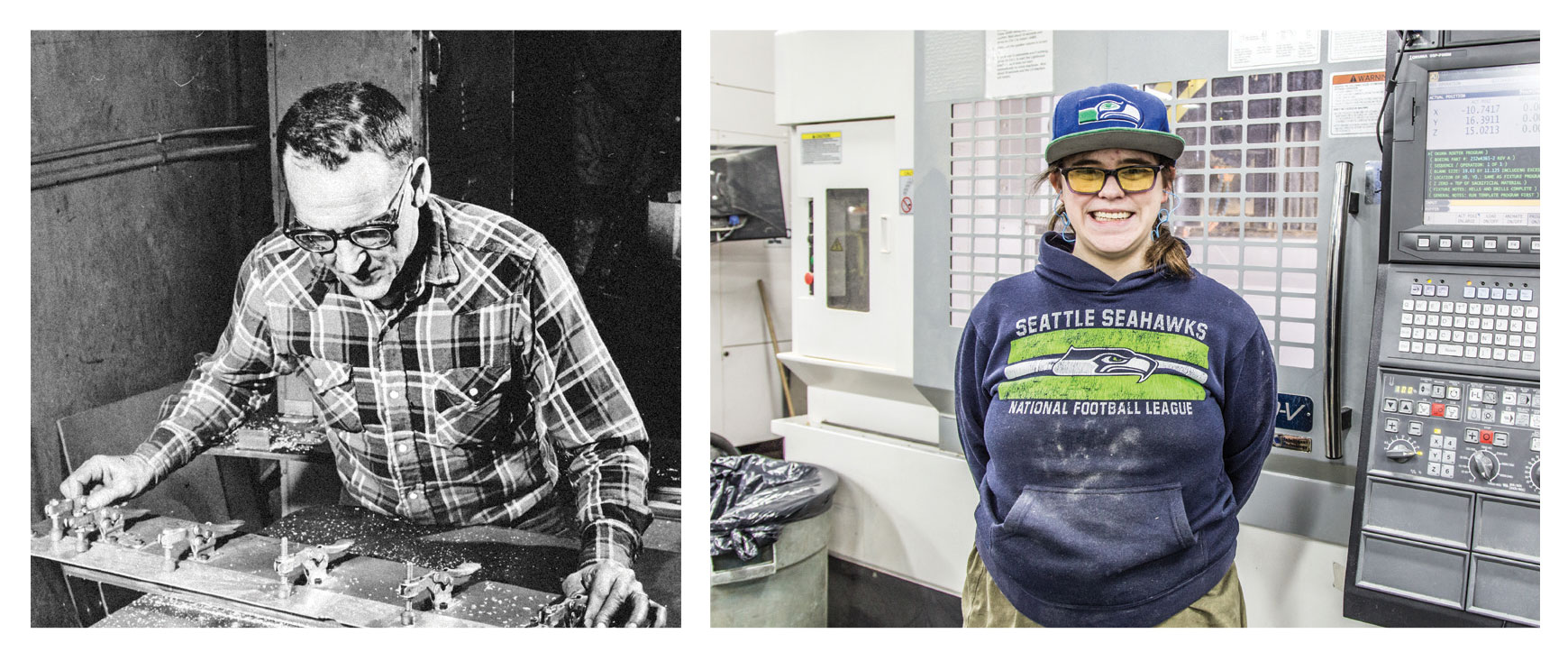
Pictured left: A Lighthouse employee in the early days of machining parts.
Pictured right: Senior Aerospace Production Worker Rachel Talley.
Since then, we haven’t stopped looking for ways to expand our product lines and offer new opportunities for our employees. We opened the doors of our first Base Supply Center in 1999 in Ft. Lewis, WA, and today we are operating seven BSCs along the West Coast. In 2008, the Lighthouse opened a new facility in Spokane, Washington, manufacturing whiteboards and easels in partnership with ACCO, employing 60 people who are blind. In 2009 and 2010 we expanded into Service Businesses, launching a Contact Center in Seattle and Contract Management Services in San Diego, CA. And in 2016, we opened a facility in Summerville, South Carolina, to serve our longtime client Boeing; with 14 employees, the site quickly became the state’s largest employer of people who are blind. Our relationship with the world’s premier airplane manufacturer may have begun as a charitable cause, but today our employees are considered part of Boeing’s workforce: “We look at the Lighthouse not only as a value to our community, and the great social mission they perform, but as an extension of our own factory,” says Jack Meehan, Emergent & Manufacturing Services Leader for The Boeing Company.
We’re enormously proud of the Lighthouse’s ability to support our community for 100 years. But our work isn’t done. Seven of ten adults who are blind are unemployed, and that number is even higher for those who are DeafBlind or blind with other disabilities. We’re determined to change that by offering classes in braille, by teaching new software skills, and by training our employees on how to use cutting-edge manufacturing equipment. In the next few years, the Lighthouse aims to expand our capabilities and geographic reach while showing our sister agencies how technological advances can open new doors for people who are blind. People like Samantha Porter, who moved from Wisconsin to Seattle to work at the Lighthouse seven years ago, and Paul Ducharme, who learned of the Lighthouse at our annual DeafBlind retreat and now shares our message with new audiences through pro-tactile American Sign Language (ASL). Turn the page to read their stories, and to see how you’ve paved the way for more stories just like theirs.
